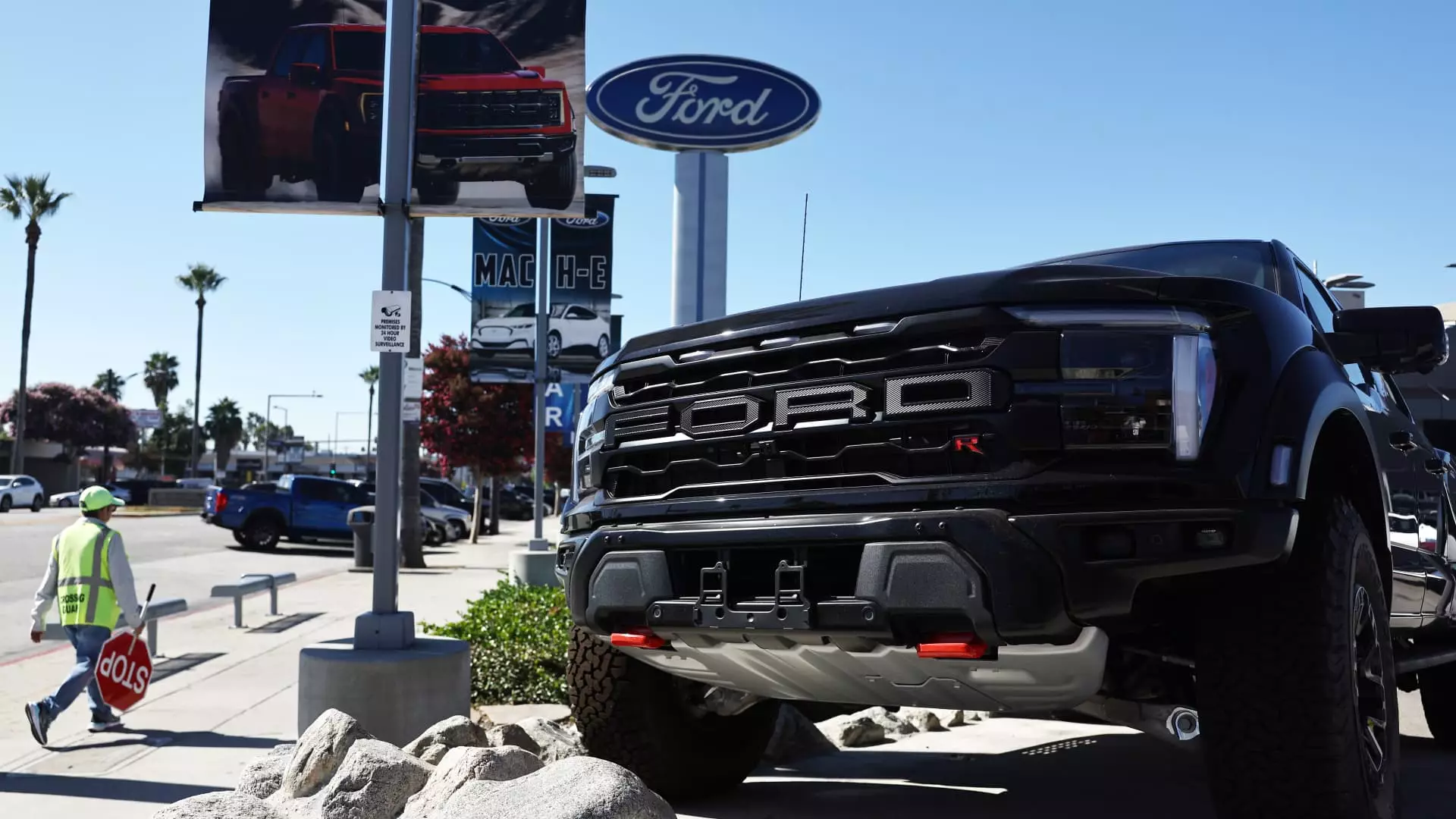In recent months, the automotive industry has found itself entangled in a web of political and economic uncertainties, primarily initiated by President Donald Trump’s controversial tariffs on imported vehicles. As these tariffs loomed, Ford Motor Company emerged as a key player attempting to navigate the storm. With a swift and strategic response, Ford introduced its “From America, For America” employee pricing program aimed at consumers in the U.S. market. The initiative is designed to bolster Ford’s sales and underscore its commitment to domestic manufacturing during a time characterized by uncertainty and potential economic downturns. However, while the company hopes to gain from this move, it raises questions about the long-term implications of such aggressive pricing strategies on profit margins.
Ambitious Initiatives in Uncertain Times
Primed for action amidst the chaos, Ford’s leadership recognized a unique opportunity to capture consumer attention. By promoting its task to support American jobs and manufacturing, the initiative attempts to create a sense of solidarity with consumers who are unsure about their financial futures under rising tariffs. The boldness of this approach is commendable; however, it also hints at deeper issues within the automotive industry. The underlying desperation to stimulate sales could potentially compromise the long-term financial health of dealerships and automakers alike.
Ford’s program moves towards selling vehicles closer to or even below invoice prices, which, while attractive for consumers, can strain already slim dealer profit margins. “We have the retail inventory to do this,” Ford proclaimed, yet such assertions may gloss over the inherent risks involved in further tightening an already fragile marketplace. Do consumers realize they might be contributing to the gradual erosion of the retail auto business? With other automotive giants, like Stellantis and Hyundai, following suit with comparable pricing strategies, this dynamic paints a worrying picture of a market inching toward self-destruction in the name of short-term gains.
The CEO’s Approval: A Clear Indicator of Urgency
Ford dealer Marc McEver enthusiastically endorsed the program, believing it will drive sales and solidify Ford’s position as a leader in responding to current market conditions. But the fervent endorsement also reflects underlying anxieties faced by dealership owners: the fear of losing market share in a tightening automotive landscape. As Ford and Stellantis compete aggressively through pricing, will this frenzy foster a race to the bottom in an uphill battle against the impending impacts of tariffs?
The stark reality is that this initiative comes at a time when many automakers are grappling with significant inventory oversupply. Analysts have pointed out the high levels of inventory for Ford and Stellantis brands, including Ram Trucks and Jeep, which currently carry significantly higher days’ supply figures compared to the industry standard. The hidden narrative here is that these companies may be acting out of necessity, driven by an overwhelming need to clear out older models to make way for new ones, rather than genuinely catering to customers’ needs.
Consumer Behavior: Fear Meets Buying Spree
Even with uncertain futures lurking on the horizon, consumer interest surged as news of the tariffs broke. Many rushed to purchase vehicles, driven by a fear of imminent price hikes. J.P. Morgan’s recent report raised the likelihood of a recession, further propelling customers to act quickly. The automotive industry saw an unexpected spike in sales, with March alone generating an impressive 1.59 million units sold. It highlighted a paradox: consumers are simultaneously enthusiastic and fearful, suggesting that the combination of urgency and doubt creates an interesting cocktail for the industry.
However, this spike in sales doesn’t assure stability. Instead, it hints at a potentially volatile market where short-lived consumer behavior could lead to longer-term ramifications. Will the rush to buy today result in a significant slowdown in demand as consumers put off purchases after securing deals? It creates an unsettling environment where product movements occur sporadically in rhythm with political changes, raising the specter of postponed economic decisions leading into recession.
Implications for the Future: Risk and Reward
Ford’s decision to implement aggressive pricing strategies highlights the precarious balancing act faced by automakers in a politically charged landscape. On the one hand, there’s the exciting prospect of short-term sales boosts and increased consumer engagement. Conversely, the long-term sustainability of dealerships and profit margins remains in jeopardy. If other brands follow Ford’s lead, the subsequent race for price competition might further underline an industry that already grapples with profitability challenges exacerbated by fluctuating economic conditions.
As we watch this situation unfold, it’s crucial to consider whether Ford’s tactics will pay off or merely momentarily mask greater underlying issues. The time for innovation has indeed come, but at what cost? It’s a clarion call for the auto industry to address not only the numbers but also the ethos behind such programs—the sustainability of American manufacturing and the protection of consumer interests. Ford’s journey through this turbulent political landscape serves as both a beacon and a warning, shining a light on the fragile crossroads between consumer empowerment and corporate responsibility.


Leave a Reply